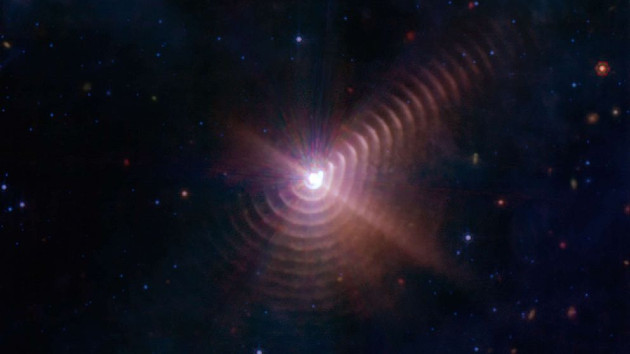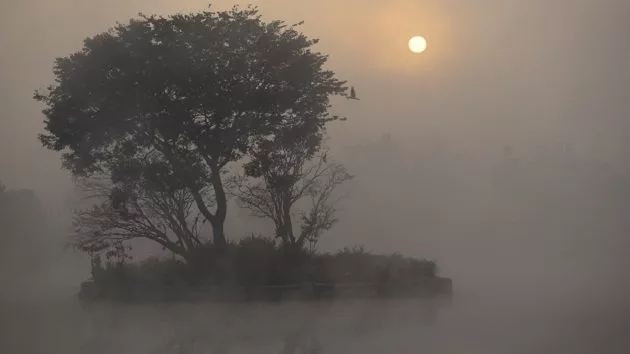
(NEW YORK) — NASA on Wednesday, released a new image from the James Webb Space Telescope of dust rings, with a “fingerprint-like pattern,” caused by two stars closely interacting with each other.
“We’re looking at over a century of dust production from this system,” Ryan Lau, an astronomer at NSF’s NOIRLab, said in a news release about the discovery. “The image also illustrates just how sensitive this telescope is. Before, we were only able to see two dust rings, using ground-based telescopes. Now we see at least 17 of them.”
According to NASA, each ring was formed when the stars were nearby of one another and the streams of gas they emitted met, creating dust.
“The stars’ orbits bring them together about once every eight years; like the growth of rings of a tree’s trunk, the dust loops mark the passage of time,” NASA said in its announcement.
Lau said that the Webb telescope’s mid-infrared technology could properly study the dust rings.
The telescope’s near-infrared camera uses infrared radiation to detect objects in space.
It can observe celestial bodies, such as stars, nebulae and planets, that are too cool or too faint to be seen in visible light, or what is visible to the human eye.
Last month, the Webb telescope captured the clearest view of Neptune’s rings in over 30 years.
“It has been three decades since we last saw these faint, dusty rings, and this is the first time we’ve seen them in the infrared,” Heidi Hammel, an interdisciplinary scientist for the James Webb Telescope Project, said in a statement at the time.
In August, NASA released two images of Jupiter from Webb that highlighted the planet’s features in detail.
Copyright © 2022, ABC Audio. All rights reserved.





